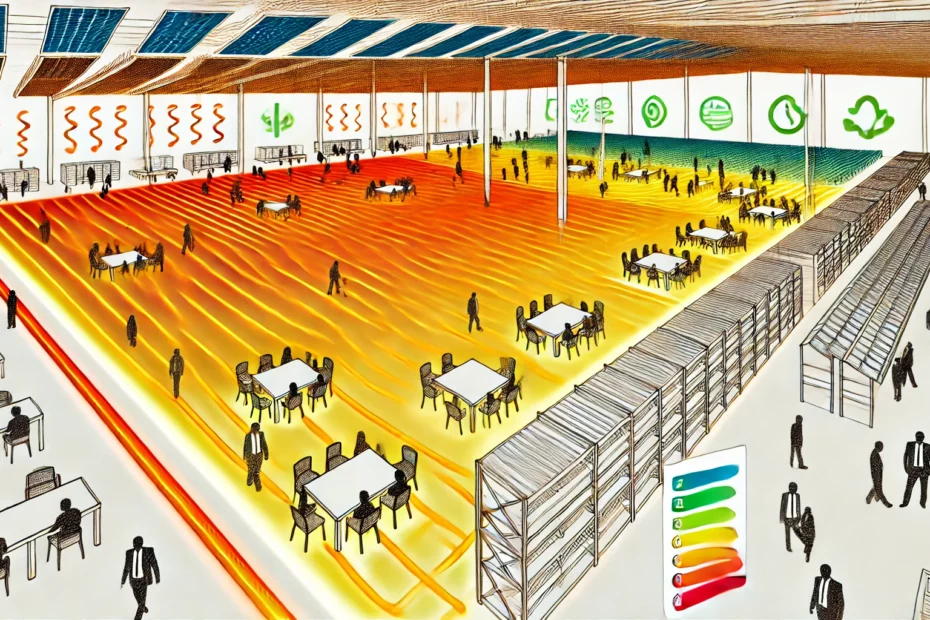Heating large spaces, whetherwarehouses, industrial buildings or large commercial halls, often represents a challenge in terms of energy consumption and thermal comfort. Radiant heating systems offer an efficient alternative, enabling large surfaces to be heated while reducing energy costs and the environmental footprint.
In this article, we’ll find out why radiant heating is the right solution for large spaces, and how it helps save energy while protecting the environment.
Energy savings with radiant heating
One of the main advantages of radiant heating is its ability to directly heat surfaces, objects and people in a room, without heating the ambient air. This method of distribution considerably reduces heat loss, which is common with traditional heating systems. As a result, even in large spaces, heat is distributed evenly, ensuring optimum thermal comfort while limiting energy consumption.
Unlike convection systems, which often have to run longer to heat a large space evenly, radiant heating heats up faster and more precisely. This translates into savings on energy bills, particularly in buildings used for professional or commercial purposes.
Reducing your carbon footprint: environmentally-friendly heating
In addition to saving energy, radiant heating helps to reduce thecarbon footprint of buildings. By heating people and objects directly, without using large amounts of energy to heat the air, this system consumes fewer natural resources. For companies and buildings concerned about their environmental impact, this represents an opportunity to contribute to preserving the environment while maintaining a high level of comfort.
What’s more, solutions such as Modular Radiant Ceiling (MRP) or Gypsum Radiant Ceiling (GRP) use eco-responsible technologies, combining quality materials and environmentally-friendly manufacturing processes. These systems are designed to last, limiting the need for replacement and the waste associated with the production of new equipment.
Tailor-made solutions for large spaces
Radiant heating is particularly well suited to large spaces because of its installation flexibility. Systems such as PRM and PRP can be installed in buildings of different configurations, from large open rooms to segmented spaces. This adaptability makes it possible to create distinct heating zones, optimizing temperature management according to the specific needs of each space.
In addition, radiant heating systems can be combined with smart thermostats or energy management systems to precisely control the temperature in each zone, guaranteeing minimum energy consumption without compromising thermal comfort.
A sustainable investment for open spaces
By opting for a radiant heating system, companies and managers of large spaces make the choice of a long-term investment. The durability of these systems, combined with their energy efficiency, means significant savings on operating costs, while maintaining ideal comfort conditions for employees and visitors.
Radiant heating is therefore an economical and environmentally-friendly solution, perfectly suited to large spaces where thermal comfort and reduced energy costs are priorities. Thanks to technologies such as Modular Radiant Ceiling (PRM) and Gypsum Radiant Ceiling (PRP), it is now possible to heat large areas while reducing environmental impact.
- What is a hydraulic heating ceiling? Definition and operating principles
- Hydraulic ceiling heating vs. underfloor heating: Which solution is more efficient?

- The advantages and disadvantages of hydraulic ceiling heating: Complete guide

- The Myth of Rising Heat: Demystifying and Explaining the Heated Ceiling

- Radiant Heating Ceilings : The Revolutionary Efficiency of an Unprecedented System


